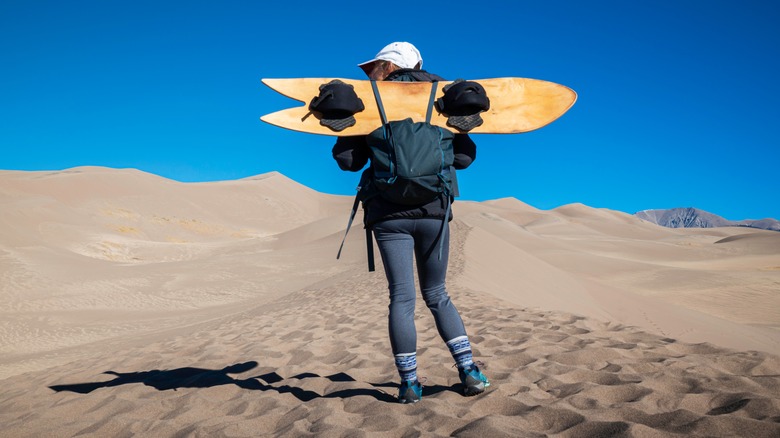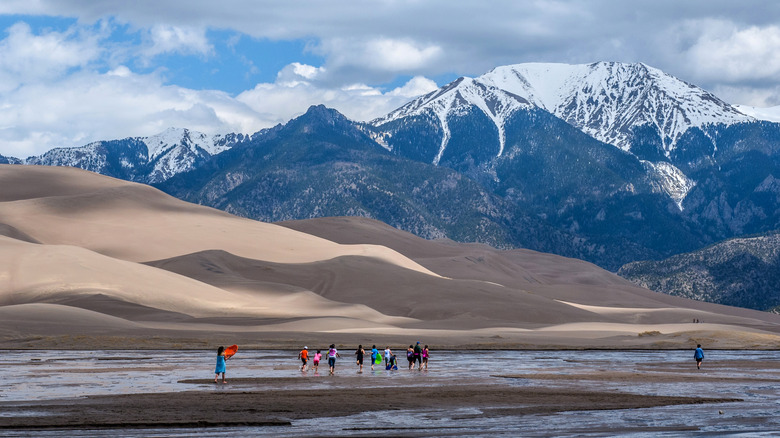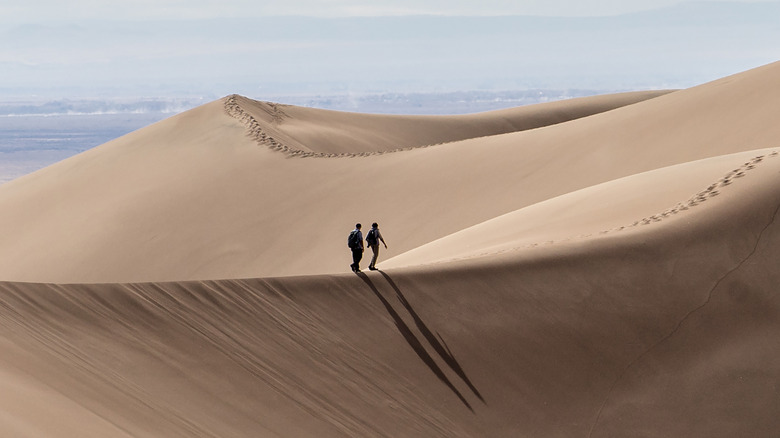Travel Guides Outdoor Adventures
Laura Jones
While Rocky Mountain National Park gets the glory and most of the visitors, Colorado’s Great Sand Dunes National Park and Preserve is an underrated stop not to miss on your next trip. Located in the heart of the San Luis Valley, the Great Sand Dunes National Park and Preserve is a powerful and beautiful testament to geology. This park is home to the tallest sand dunes in North America, where these colossal formations reach heights of up to 750 feet, offering an unparalleled opportunity for adventures.
Despite its stunning beauty, the park remains one of the most underrated sites in Colorado, perhaps due to its remote location. It’s 3.5 hours south of Denver and a three-hour drive north of Santa Fe, so it’s not exactly close to any big population centers. However, there’s a lot to do when you get there, and the park’s isolation is a big part of that.
Hiking, sledding, and exploring

false/Shutterstock
Let’s start with the star attraction in the park: the sand dunes. Sandboarding and sledding are popular activities in the stark, moon-like landscape. The National Park Service (NPS) advises that you can sandboard or sled down the dunes anywhere in the park away from vegetation, and writes that it’s a 0.7-mile hike to the smallest of the dunes. Plan for at least a 1.25-mile hike if you want to cruise down the larger ones. You can’t rent equipment in the park, so do that before heading in.
If you’d rather stay firmly on two feet, there are 30 square miles of sandy goodness to explore. There are no trails in the sand, though the NPS has several recommendations for dunes to seek out. Visitors with a 4WD are welcome to explore the ruggedly scenic Medano Pass Primitive Road; those who don’t own one can rent a Jeep or take a tour.
Whether you’re hiking or sandboarding, be aware of the weather conditions. Surface temperatures of the sand can reach 150 degrees Fahrenheit in the summer, and afternoon thunderstorms can make conditions unsafe. Plan your visit for early morning or evening to avoid getting into trouble.
Swimming, star gazing, and camping

Sean Xu/Shutterstock
Some visitors are surprised to learn that Great Sand Dunes is home to Medano Creek, where at certain times of the year, visitors can splash around and cool off. The creek usually begins to flow around the base of the dunes in April and the flow increases through May and June — the best time to enjoy the creek’s waters. You may be lucky enough to see waves cascading across the sand at this time, too. The NPS warns that the creek gets very crowded on weekends in May and June, so try to come on a weekday.
After darkness falls, the park stays alive. The isolation of Great Sand Dunes helped it to become an International Dark Sky Park in 2019; the International Dark-Sky Association praises the park for its quietness and its pristine skies. The Milky Way is often visible in the park, and rangers run free nighttime programs throughout the summer to help visitors discover the stars.
When you’ve finished gazing at the celestial show Great Sand Dunes puts on, it’s still not time to go home. There’s one campground in the park, Piñon Flats, and permits are available for backcountry camping, too. The park offers visitors year-round, 24/7 experiences.

